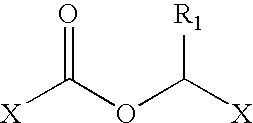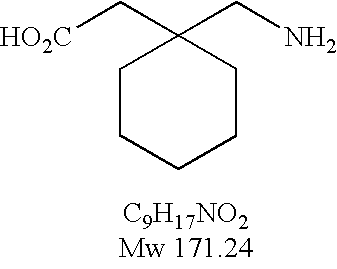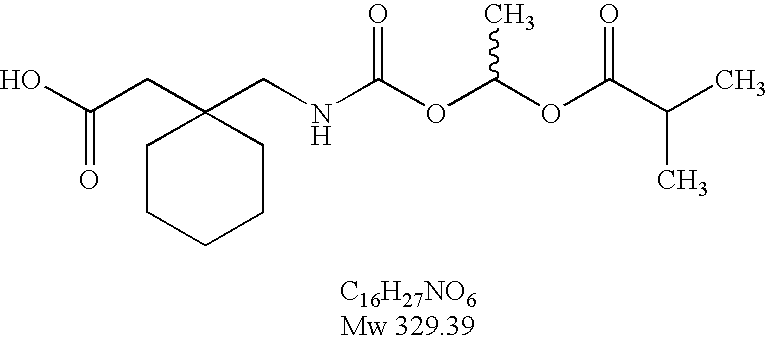Processes for the preparation and purification of gabapentin enacarbil
a gabapentin and purification technology, applied in the preparation of carbamic acid derivatives, chemistry apparatus and processes, organic chemistry, etc., can solve the problem of harm to a patient being treated with a dosage form
- Summary
- Abstract
- Description
- Claims
- Application Information
AI Technical Summary
Problems solved by technology
Method used
Image
Examples
example 1
Preparation of CEC-NP
[0194]Reactor (500 ml) was loaded with 4-Nitrophenol (10 g, 0.07 mol) dissolved in Toluene (150 ml) followed by dropwise addition of 1-chloroethyl chloroformate (13.25 g, 0.09 mol) and then Tributyl amine (17.3 g, 0.09 mol). The obtained solution was stirred at room temperature for additional 30 min. At this point according to HPLC no 4-Nitrophenol remained. The reaction was washed with 1N HCl (150 ml), water (2*100 ml) and brine. The aqueous phase was removed from the reactor and to the remaining toluenic solution was evaporated.
example 2
One-Pot Process for Preparation of AEC-NP
[0195]Reactor (500 ml) was loaded with 4-Nitrophenol (10 g, 0.07 mol) dissolved in Toluene (150 ml) followed by dropwise addition of 1-chloroethyl chloroformate (13.25 g, 0.09 mol) and then Tributyl amine (17.3 g, 0.09 mol). The obtained solution was stirred at room temperature for additional 30 min. At this point according to HPLC no 4-Nitrophenol remained. The reaction was washed with 1N HCl (150 ml), water (2*100 ml) and brine. The aqueous phase was removed from the reactor and to the remained toluenic solution was added Zinc oxide (17 g, 0.21 mol), Sodium iodide (10.5 g, 0.07 mol) and Isobutyric acid (50 ml). The obtained mixture was heated at 75° C. monitored by HPLC. The reaction was stopped approximately after 10 h. The reaction was washed with NaHCO3 solution and then with brine. The solvent was evaporated to give the product in 60% yield.
example 3
One-Pot Process for Preparation of AEC-NP
[0196]Reactor was loaded with 4-Nitrophenol (5 g, 35 mmol) dissolved in Toluene (75 ml) followed by addition of triethylamine (TEA) (3.8 g, 38.5 mmol). The obtained yellow colored solution was cooled to 5° C. and then 1-chloroethyl chloroformate (38.5 mmol) was added dropwise. The obtained jelly-like slurry was stirred for additional 30 min, at this point according to HPLC no 4-Nitrophenol remained. The reaction mixture was filtered; the filtrate was loaded to the reactor followed by addition of Zinc oxide (38.5 mmol), Potassium iodide (19.3 mmol) and Isobutyric acid (43 ml). The obtained mixture was heated at 80° C. monitored by HPLC. The reaction was stopped approximately after 10 h. The reaction was washed with NaHCO3 solution, 20% Na2S2O3 solution and then with brine. The solvent was evaporated to give the product in 40% to 50% yield.
PUM
| Property | Measurement | Unit |
|---|---|---|
| pressure | aaaaa | aaaaa |
| bead size | aaaaa | aaaaa |
| temperature | aaaaa | aaaaa |
Abstract
Description
Claims
Application Information
 Login to View More
Login to View More - R&D
- Intellectual Property
- Life Sciences
- Materials
- Tech Scout
- Unparalleled Data Quality
- Higher Quality Content
- 60% Fewer Hallucinations
Browse by: Latest US Patents, China's latest patents, Technical Efficacy Thesaurus, Application Domain, Technology Topic, Popular Technical Reports.
© 2025 PatSnap. All rights reserved.Legal|Privacy policy|Modern Slavery Act Transparency Statement|Sitemap|About US| Contact US: help@patsnap.com



